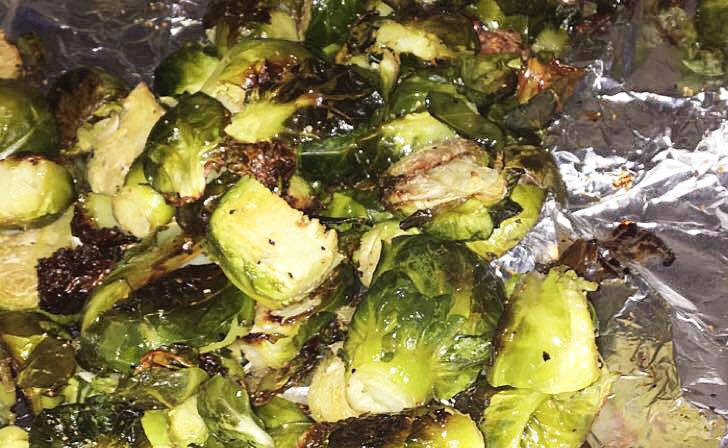In case you thought Wednesday was a bad diaper day for the toddlers, you can be rest assured, it was merely the PreK’s batch of brussels sprouts baking in the oven. We take our nutrition study seriously and that means stepping out of our comfort zone from time to time to try new tastes and textures. Brussels sprouts and pesto were two items on the list in some classes. In case students are reluctant to try a new food, they always have the choice to opt out. Along with the taste testing comes graphing, to document preferences. Interestingly, in the Preschool 3s class students sampled pesto. A few voted that they liked it. Others didn’t try it and wanted to vote no. Not wanting their names in the “didn’t try it” section of the graph, many of them tried the pesto and actually liked it! Hmmmm….
Phase two of the Project approach has these characteristics:
• children collect data through site visits, interviews, surveys, questionnaires
• variety of media available to represent learning (e.g. art, model making, music, play, verbal expression)
Our first week of investigating nutrition was full of both. Toddler 1s spent the whole week exploring in their sensory bin with play dough and tools parents sent in from home, such as tongs, potato mashers, spatulas, spoons, strainers, and pie cutters. The Toddler 2s jumped right into tasting grapes and blueberries. After a taste test they graphed their results. Grapes were victorious. In addition to tasting other fruits, they sang food songs and enjoyed incorporating food in their dramatic play. Hummus pancakes and popcorn muffins were among their unique culinary delights. In addition to sampling pesto, the Preschool 3s talked about the concept of “healthy choices” and started sprouting seeds as a transition into planting their garden. Preschool 4s students matched fake food with pictures on their classroom food graph and became avid, enthusiastic chefs.
When I checked in with the kindergarteners I found out they’ve been graphing their lunches with the MyPlate categories (https://www.choosemyplate.gov). A hot topic this week has been gluten. Some eat it, some don’t. For a hands-on experience and better understanding, they’ll be playing with flour to learn more about gluten, then make it into an edible (for some) sculpture. I found out that the 3rd/4th graders have followed their interest in food labels. They’ve talked about sugar, fiber, and serving sizes. They’ve begun collecting labels and talked about vocabulary such as “healthy,” “organic,” and “natural.” Next week these same food detectives will visit a local grocery store to look at persuasive labeling, among other things. Using the Fooducate app (http://www.fooducate.com) and collected data, they’ll be creating interactive displays to teach about tricky nutrition terms.
In the next week or so, teachers and students will pull together what they’ve learned about food. You’ll be seeing art, writing, charts, displays, and perhaps taste the results of classroom culinary adventures. We appreciate the contributions you’ve made to our nutrition study so far and invite you to join our efforts in providing your children the best possible relationships with their food. Check out our seedfood website (seedfood.awakeningseedschool.org), and look in your mailbox for a handy shopper’s guide from Environmental Working Group (https://www.ewg.org/foodnews/index.php#.WbGYsK2ZP_8) that lists both the Dirty 12, and Clean 15. Let us know what your needs and interests are regarding family nutrition. It’s a two-week focus in school with an intention of influencing a lifetime of healthy eating.

